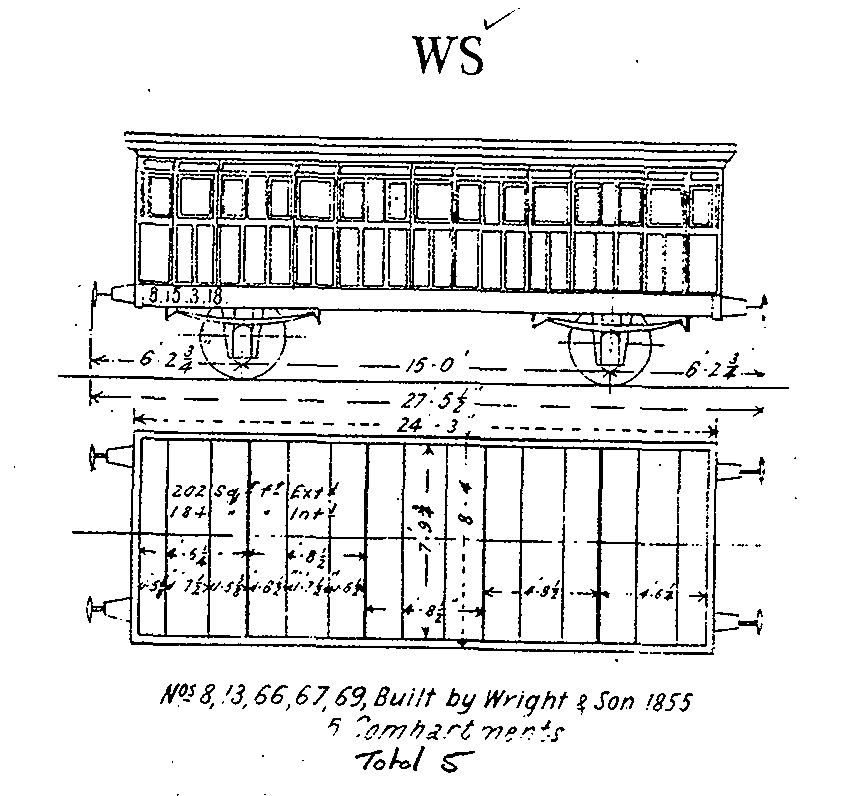

The WS class evolved from a collection of old carriages and vans in railway service. At 1886 there was a list of carraiges and their use as works sleepers. These carriages were later absorbed into the "WS" number group. It is difficult to determine when the class letters were first used, the data suggests 1887.
These works sleepers were used throughout the state system. They were accommodation for supervisory and repair staff who were required to travel. These people included telegraph fitters, foreman, bridge repairers, track staff, signal fitters.
Conversions of redundant stock progressed through the 1890's until April 1910. No doubt this stock was released by bogie the introduction of bogie carriages. This caused a cascading effect which left the oldest stock built up to the 1880's for railway use.
By April 1910, the WS fleet numbered 1 - 120. In the 1910 recoding, the WS class letters became simply _W__. The vehicles were re-numbered in the process which makes research from the Diagram Books difficult. Construction and conversion into this group continued after April 1910 as the 'W' class and in that number group.
The WS class includes conversions from: _AB_ First/Second class fixed wheel cars, _B__ / _BH_ Second class fixed wheel cars, _E__ mail vans and _D__ Guards Vans.
The WS to W translation numbers are as follows:
|
WS |
W |
|
1 - 8 |
2 - 9 |
|
10 - 12 |
( _WW_ 1, 2, 3 ) |
|
13 - 120 |
11 - 118 |
In the most cases the WS cars that became W were the 2nd or 3rd vehicle of the number.
From 1906, a number of older vehicles were scrapped and were rebuilt to a new sleeping van design built in 1901. This van eventually became _W__ 1.